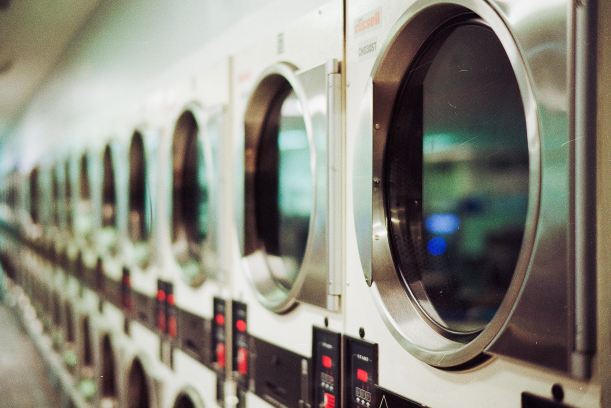
We have all been advised to wear face coverings when entering enclosed spaces outside of our own home- but do you know how to care for your face covering? These are your face covering questions, answered.
- How often should you wash your face covering?
- How do you safely remove a face covering?
- What should you do if you can’t wash your face covering immediately?
- Can you wash your face covering with other laundry items?
- What’s the best way to wash a face-covering in the washing machine?
- How do you hand wash a face covering?
- How do you dry a face covering?
How often should you wash your face covering?
You should wash your face covering after every wear. Your face covering will create a barrier to catch any virus-filled droplets that are breathed out in your everyday life. It is important to remember that you may encounter some people who will not be wearing masks and their virus-filled droplets could attach to the front of your face covering. To avoid any cross-contamination of COVID bacteria it is safest to wash the front and inside of your face mask after every wear.

How do you safely remove a face covering?
Remove your face covering with care. Use the strings securing your covering to loosen and take it off. When removing, and once removed, avoid touching your eyes, nose, and mouth until you can wash your hands. You should wash your hands immediately after handling your face covering to remove any harmful bacteria that may have been transferred.

What should you do if you can’t wash your face covering immediately?
If you can’t immediately wash your face covering, simply place it in a disposable bag until you can. Avoid placing your covering directly onto a surface as this can spread potentially harmful bacteria. If you do place your covering on a surface, make sure to disinfect the surface as soon as possible.

Can you wash your face covering with other laundry items?
You can wash your face covering with other laundry items, as long as your covering is not overly delicate. COVID bacteria are highly unlikely to transfer from one material to another before the laundry detergent eliminates it.

What’s the best way to wash a face covering in the washing machine?
The best way to wash a face covering in the washing machine is dependant on the material of your covering. Put your face covering in your washing machine with similar materials so that it does not get damaged. Prior to putting your covering in your machine check the care label to see what the highest appropriate temperature is. There is no need to buy a specific laundry detergent, whatever brand you usually use is completely fine. Once you have inserted your face covering with your other laundry items and inserted the detergent, set your washing machine to the highest appropriate temperature, and wait for your cycle to finish.

How do you hand wash a face covering?
If your face covering is made from a particularly delicate material it may be best to hand wash it. If this is the case, all you need is laundry detergent and warm water. Pour a decent amount of laundry detergent onto your mask and use some warm water and a scrubbing motion to make the material soapy. Scrub your mask for a minimum of 20 seconds, making sure that all areas of it have been covered. After 20 seconds or more, rinse your mask with warm water, making sure that all of the soapy residue has been washed off.

How do you dry a face covering?
The most effective drying method for a face covering is either by tumble drying or air drying. If you are using the tumble dryer, set the dryer to its highest temperature, and leave your covering in until it is completely dry. Alternatively, lay your face covering completely flat on a flat surface and wait for it to air dry. If possible, dry your mask in direct sunlight.

If you decide to air dry your mask make sure that you iron it once it has been dried. You want to use some form of heat to make sure that all of the bacteria from your mask have been eliminated and using an iron is the fasted way to do this.

At Laundryheap, we want to ensure that you stay safe. That is why we offer a hot wash service and will deliver your laundered clothes contact-free. Book your slot by heading to the Laundryheap website or by downloading the free Laundryheap app.




























